ULTIMATE GUIDE TO BARRICADING A DOOR
- GENE PETRINO

- Jun 4, 2019
- 6 min read
By far the biggest obstacle to overcome when creating a survival plan is overconfidence. Today I am going to talk to you about something that many give little thought to for that exact reason, barricading a door. When we teach our active shooter response programs, we often hear ‘how hard could it be,’ or it’s just a door. This is faulty thinking and is the reason we created the ultimate guide to barricading a door. Let’s dig in!
DON’T FORGET:
As a reminder, your first course of action during an active shooter incident is to RUN if you can. Above all, make sure you run in the opposite direction of the shooter, and don’t stop until you are in a safe location. Then call the police.
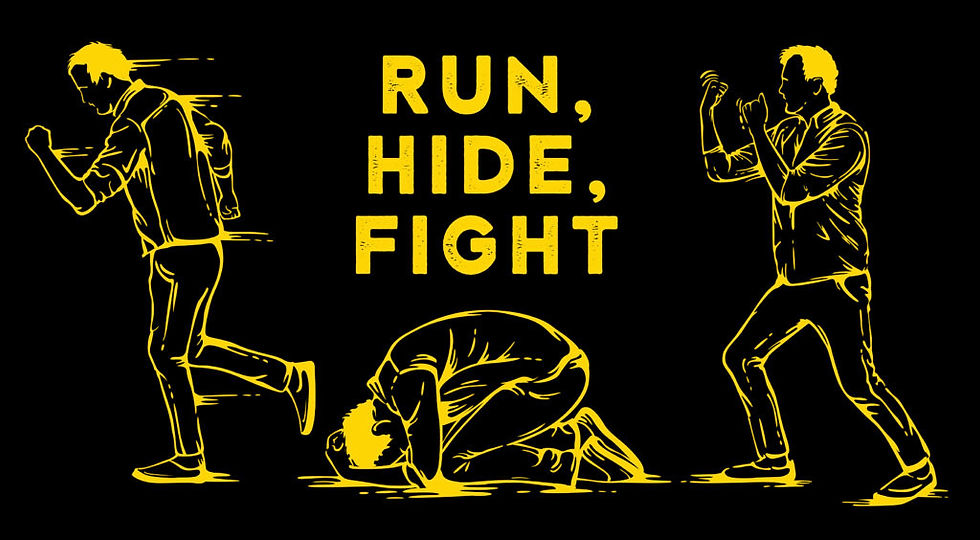
Assuming you are not able to RUN, your next course of action is to HIDE.
Once hidden inside a room, you must first lock the door. This seems so basic, but it is often overlooked. Once you’ve locked the door, it’s time to figure out how you’re going to barricade that door. In order to do that successfully, you’ll first need to understand some basic mechanics of doors. Sounds obvious, but it’s not.
INWARD OPENING DOORS:
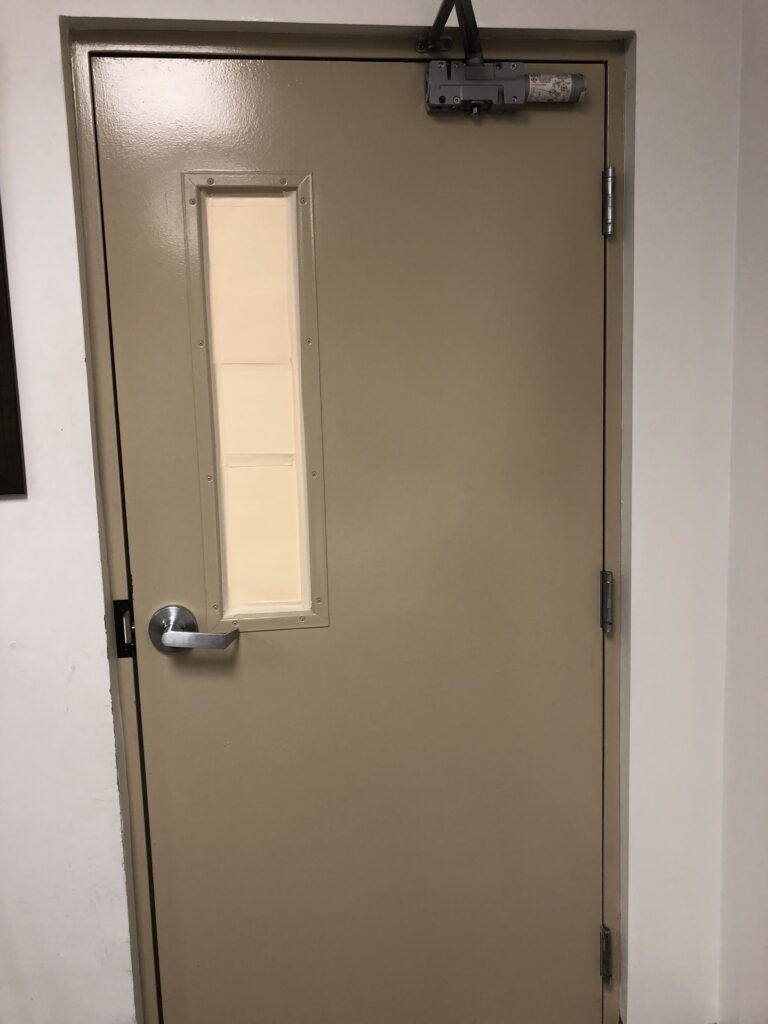
Inward opening door has visible hinges. This makes it easier when barricading a door.
First, let’s consider inward opening doors versus outward opening doors. There is perhaps a no better example of this than what is portrayed in the movie The Big Lebowski. In this scene, ‘The Dude’ tries to barricade his apartment door using a 2×4 nailed into the floor and a chair to bolster the door. (watch the short clip here) Had he understood the difference between an inward v. outward opening door, he might have been successful. Certainly, it’s a funny scene in a movie. However, it would be a fatal mistake in real life.
The biggest advantage to an inward opening door is the fact that it must be pushed into a room in order to gain access. This means that heavy objects in front of the door will make it difficult to open from the outside.
In an emergency, the fastest way to determine if a door opens inward or outward is by the hinges. If you can see hinges, that means the door will open towards you. So if you’re inside a room and you see the hinges, you have an inward opening door.
OPTIONS FOR INWARD OPENING DOORS
There are many options to barricading an inward opening door. Placing a chair at an angle under the door handle is one method.
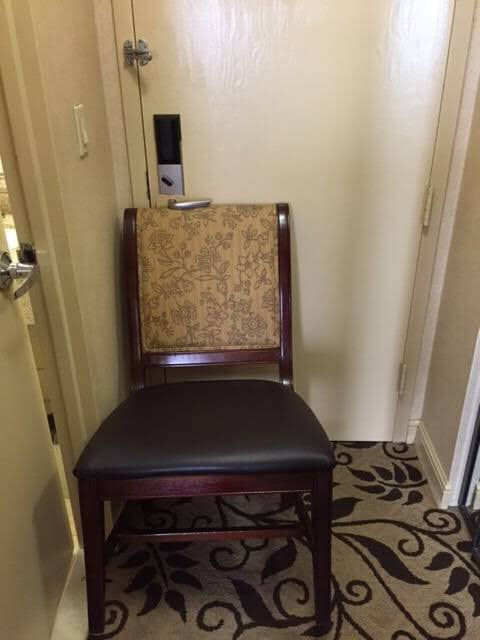
Barricading a door with a chair.
Additionally, you can also stack as much furniture in front of it.

Barricading a door with glass see through panes.
If time and space allow, you can even place furniture in a line from the wall opposite of the door, to the door itself.
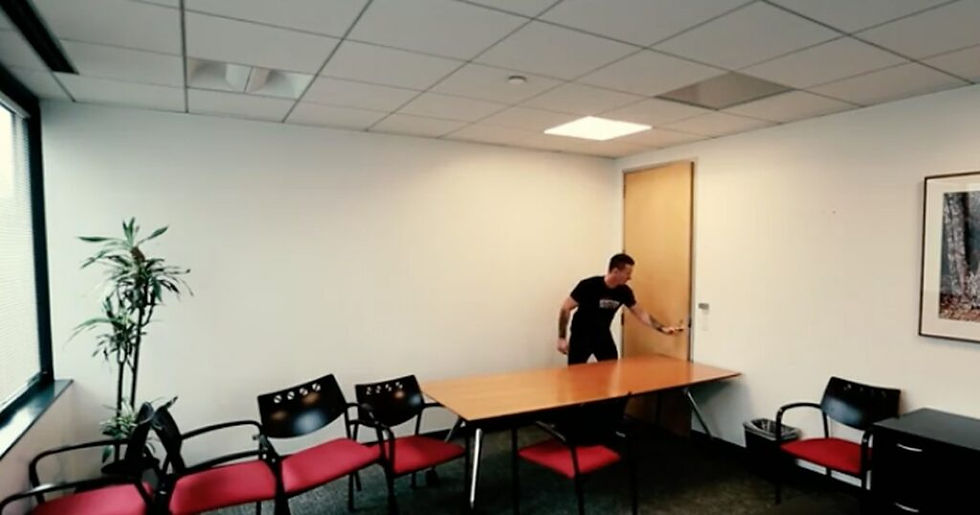
Barricading a door with a row of furniture.
INWARD DOOR PROS:
Must be pushed open into the room
No hinges visible from the outside
Can’t be pried
Offer the best option when it comes to barricading
Heavy objects in front of door decrease likelihood of someone being able to push it open
INWARD DOOR CONS:
Can be kicked in or forced open if not secured/barricaded properly
OUTWARD OPENING DOORS
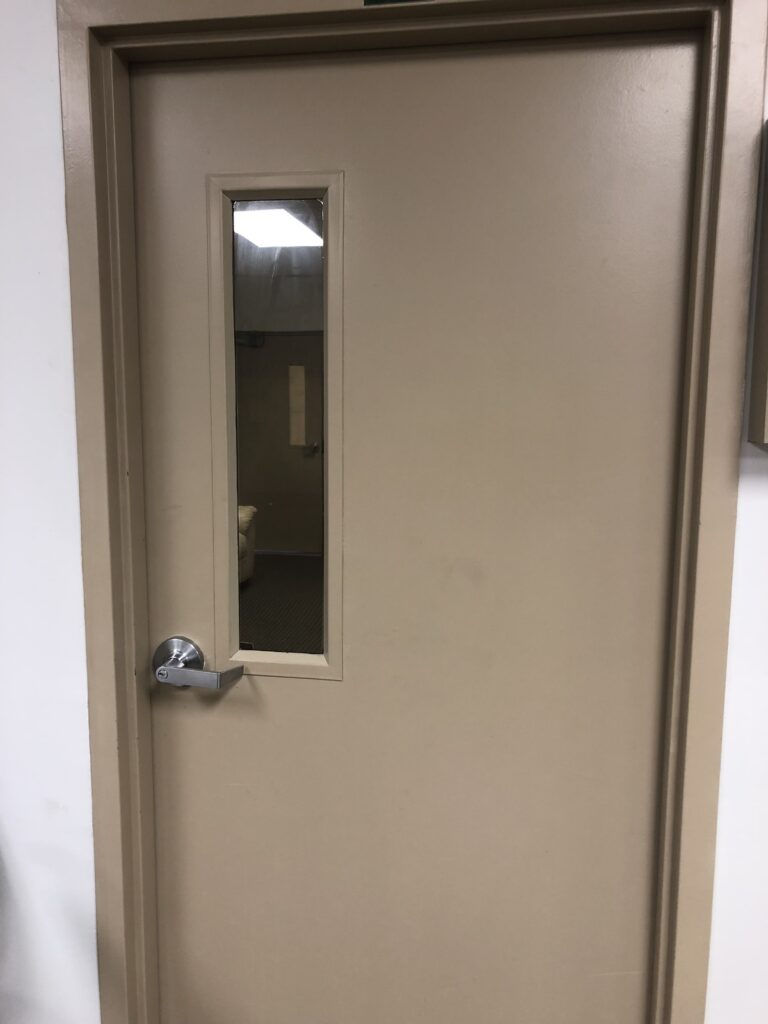
Outward opening doors are a bit more challenging to secure. Barricading will only provide a possible visible obstruction for the attacker. This is important, however, you still need to work on preventing the door from opening.
OPTIONS FOR OUTWARD OPENING DOORS:
As will all doors, the first thing you need to do is LOCK IT! Next, look for ways to secure the handle. Find a cord, belt, purse strap, computer cable, etc. Tie it around the handle and if possible, tie it to a piece of heavy furniture.
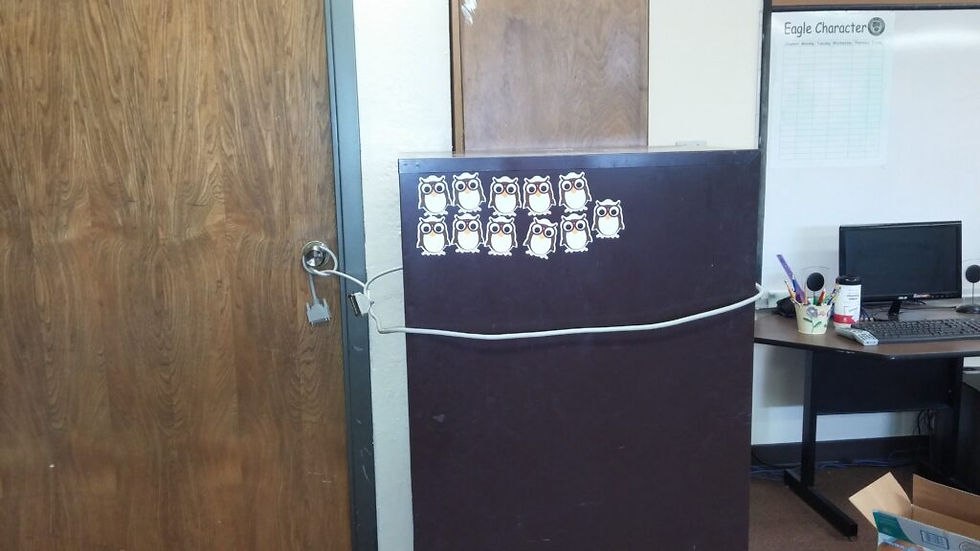
Barricading a door with cable and furniture.
If there is nothing to tie it to or the cord is too short to reach, stand to the side of the door and hold on tight. By using the door frame as a brace, you will have more leverage to keep the door closed when someone is trying to open it. Try to avoid positioning yourself in front of the door.
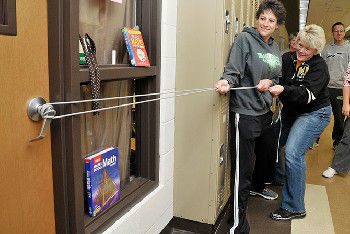
Additionally, here is another method. This one needs to be set up prior to locking the door. If you have an extension cord, place the plug end outside of the door, and the cord under the door. Then close and lock the door. You can then either tie the cord off on a piece of heavy furniture or hold on to it standing to the side of the doorway.
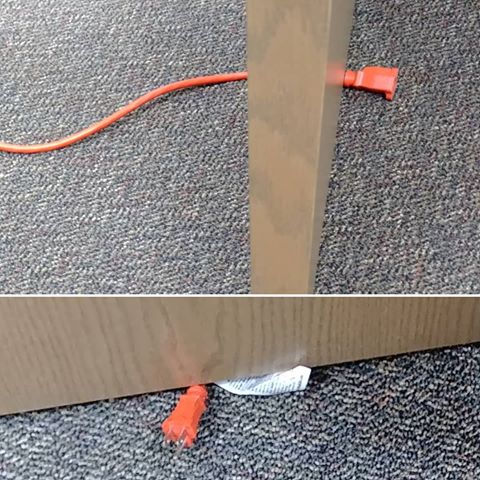
One critical misconception about outward opening doors is that it is useless to barricade them. That is simply not true. First, start by placing any tall items available that will be used to obstruct the view inside. Next, just like the inward opening door, start stacking as much furniture as you can in front of it. As a result, the shooter will have limited or no line of sight to shoot the occupants inside. Furthermore, they are looking for easy targets and will most likely not attempt to climb over the obstructions. If they do, they will be a great disadvantage and will give you an opportunity to attack. Remember, at this point is either you or them.
OUTWARD DOOR PROS:
Can be secured if you understand how
It is harder to pull a door open than push it open
INWARD DOOR CONS:
Difficult to secure if you’re unprepared
Barricading may not prevent line of sight once opened
Easily identified as having push bar
SPECIALTY DOORS AND CLOSING SYSTEMS
You may encounter other door systems which create their own special challenges. For example, double doors, door closers, vertical arms, glass doors, etc. No matter the door type, your main focus is the same, lock/barricade/obstruct the view and entry. Here are few examples of how to address these doors/systems when barricading a door.
DOUBLE DOORS
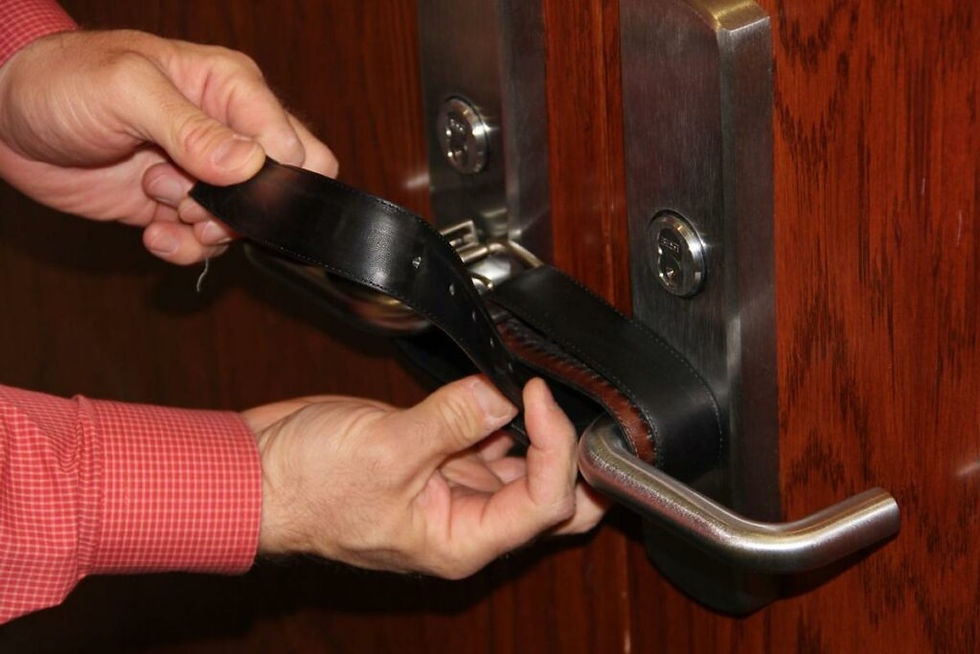
DOOR CLOSERS

VERTICAL ARMS
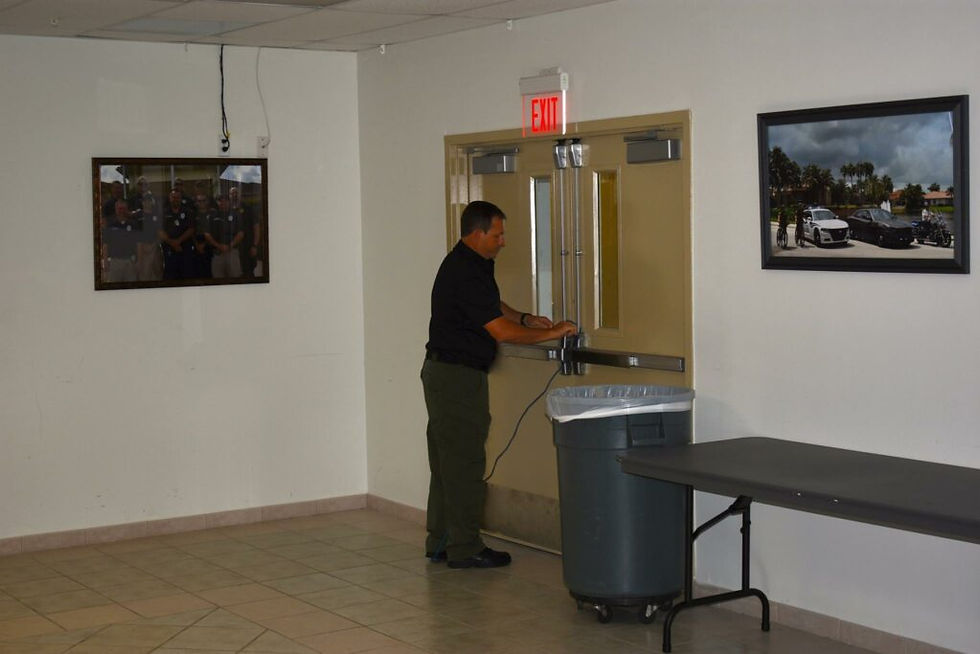
GLASS DOORS
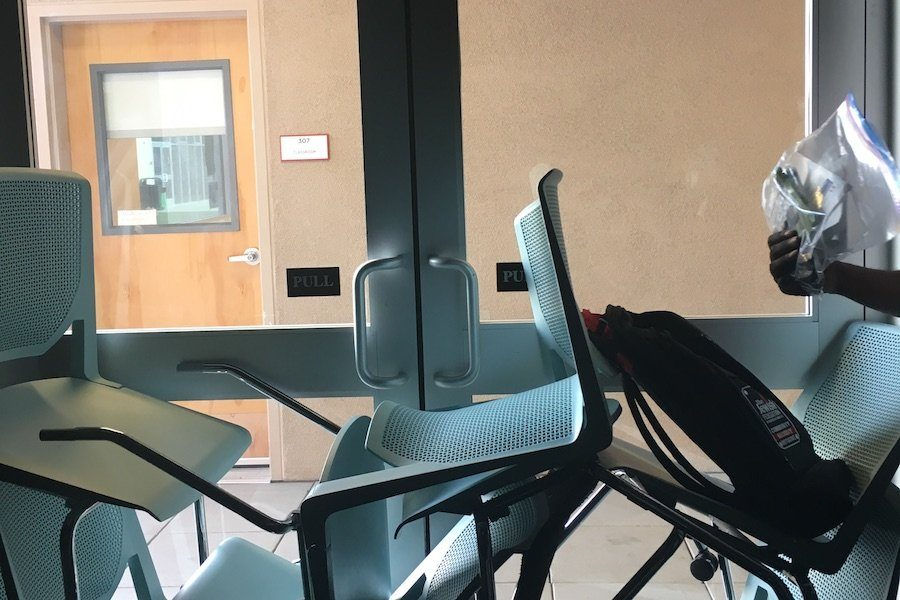
AFTER MARKET LOCKING DEVICES:
There is a myriad of creative new products that address the need to quickly secure a door. These products can cause more harm than good. Most of the products are designed for quick installation and are stored on or next to the door. Therefore, anyone inside the room will have access to them and be able to deploy them without delay. Of course, that is great if you are the one trying to protect yourself from an attack. The issue is that open access to the device can also be used by an attacker. With unrestricted access, the shooter would be able to carry out his attack unencumbered. Additionally, it would also delay the response of law enforcement as they would have to defeat the barricade to gain access.
The other issue is that most of these devices are not compliant NFPA Life Safety Codes in schools. Some of the compliance guidelines for classrooms are:
Doors must have locks or latches on egress that operate with a single motion. That means no additional locks or devices can be added that would impede the occupants from exiting quickly during a fire.
Opening must be simple. No special knowledge, pinching, or twisting of the wrist should be needed to remove a latch.
Any hardware attached to a fire door must be a UL-listed fire device.
Other restrictions by ADA prohibit the height of the locks and latches on doors to be higher than 48 inches or lower than 34 inches. This is to allow an occupant who is physically disabled to release the mechanism and prevent them from being trapped inside.
AFTER MARKET LOCKING SYSTEMS PROS:
Most of the systems do an outstanding job of securing doors
Typically quick and easy to install/use
AFTER MARKET LOCKING SYSTEMS CONS:
Unintended consequences
Fire hazard
Opportunity for shooter to lock himself inside with victims
Delayed law enforcement response
CONCLUSION
The importance of barricading a door during an active shooter incident cannot be understated. Doing it properly is key. By understanding the basic mechanics of doors, you will have the advantage you need to survive these horrific events. Remember, the goal is to obstruct the view into the room and create an insurmountable obstacle for the shooter. This will force them to move on to easier targets. As with every aspect of survival preparation, you need to practice. Now, go check out the doors around your house, work, and everywhere else you frequent. Don’t be a victim. Be a survivor!





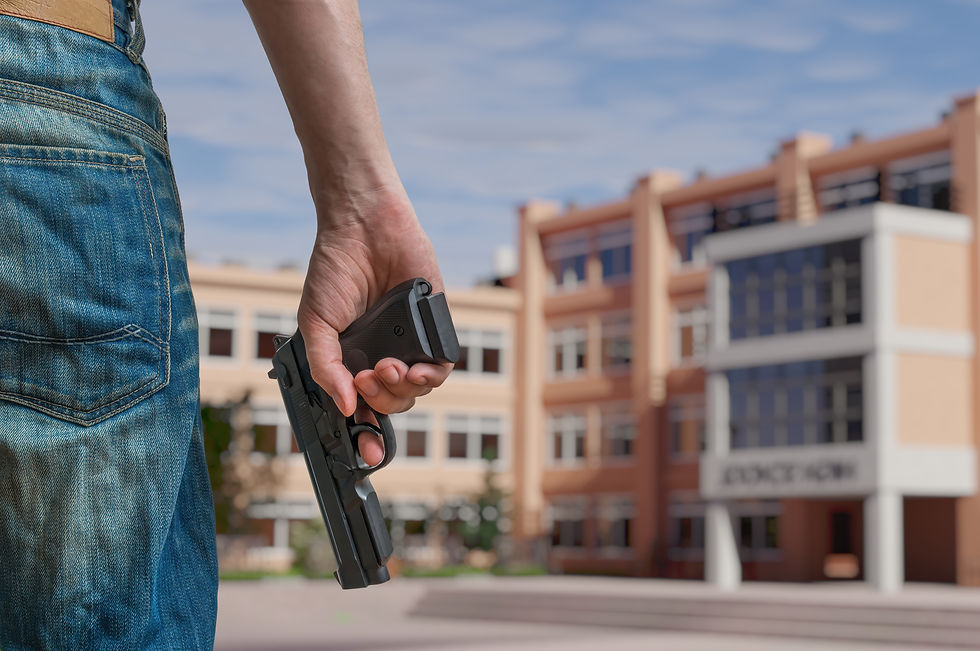

Comments